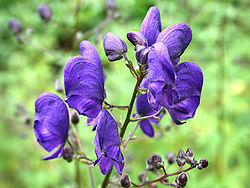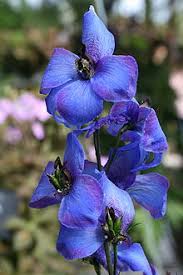belladonna(atropa belladonna)


hyoscyamus niger


stramonium


gelsemium sempervirens



aconitum napellus





bryonia alba



delphinia larkspur(staphysagria)



arnica montana




helleborus niger



veratrum album



agaricus muscarius


anacardium orientale


lycopodium clavatum:


pulsatilla praetensis:




Ignatia amara:




lillium tigrinum:


bellis perennis



conium maculatum:




aloe socotrina:
loe Perryi, Baker, the now recognized source of Socotrine aloes, resembles in habit the Aloe vera (Linné), Webb, but its leaves are shorter and the tube of the flowers is of a much greater length than the segments. The flowers are also borne on long pedicles and arranged in racemes much looser than those of the Barbadoes plant. The true aloes plant, and that from which the drug was formerly believed to have come, is the Aloe socotrina, which inhabits the Island of Socotra. The stem is woody, straight, 1 1/2 feet high, or more, and naked below, where it is strongly marked with the scars of leaves. Leaves amplexicaul, ascending, ensiform, green, curved inward at the point, convex below, rather concave above, marked with numerous small white marginal serratures; parenchyma abounding in a bright brownish-yellow juice. The raceme is cylindrical and unbranched; flowers scarlet at the base, pale in the middle, green at the point. Stamens unequal, three of them longer than the flowers.


calendula officinalis:
It is a short-lived aromatic perennial plant, growing to 80 cm tall, with sparsely branched lax or erect stems. The leaves are oblong-lanceolate, 5–17 cm long, hairy on both sides, and with margins entire or occasionally waved or weakly toothed. The inflorescences are yellow, comprising a thick capitulum or flowerhead 4–7 cm diameter surrounded by two rows of hairy bracts; in the wild plant they have a single ring of ray florets surrounding the central disc florets. The disc florets are tubular and hermaphrodite, and generally of a more intense orange-yellow colour than the female, tridentate, peripheral ray florets. The flowers may appear all year long where conditions are suitable. The fruit is a thorny curved achene.[1][3]
Synonyms include Calendula officinalis var. prolifera. Other recorded English names include Ruddles, Common Marigold, Garden Marigold, English Marigold, and Scottish Marigold.[3

 --seeds
--seeds


hyoscyamus niger
stramonium

gelsemium sempervirens
aconitum napellus



bryonia alba
delphinia larkspur(staphysagria)
arnica montana

helleborus niger
veratrum album


agaricus muscarius
anacardium orientale
lycopodium clavatum:
pulsatilla praetensis:
Ignatia amara:
lillium tigrinum:
bellis perennis
conium maculatum:

aloe socotrina:
loe Perryi, Baker, the now recognized source of Socotrine aloes, resembles in habit the Aloe vera (Linné), Webb, but its leaves are shorter and the tube of the flowers is of a much greater length than the segments. The flowers are also borne on long pedicles and arranged in racemes much looser than those of the Barbadoes plant. The true aloes plant, and that from which the drug was formerly believed to have come, is the Aloe socotrina, which inhabits the Island of Socotra. The stem is woody, straight, 1 1/2 feet high, or more, and naked below, where it is strongly marked with the scars of leaves. Leaves amplexicaul, ascending, ensiform, green, curved inward at the point, convex below, rather concave above, marked with numerous small white marginal serratures; parenchyma abounding in a bright brownish-yellow juice. The raceme is cylindrical and unbranched; flowers scarlet at the base, pale in the middle, green at the point. Stamens unequal, three of them longer than the flowers.
calendula officinalis:
It is a short-lived aromatic perennial plant, growing to 80 cm tall, with sparsely branched lax or erect stems. The leaves are oblong-lanceolate, 5–17 cm long, hairy on both sides, and with margins entire or occasionally waved or weakly toothed. The inflorescences are yellow, comprising a thick capitulum or flowerhead 4–7 cm diameter surrounded by two rows of hairy bracts; in the wild plant they have a single ring of ray florets surrounding the central disc florets. The disc florets are tubular and hermaphrodite, and generally of a more intense orange-yellow colour than the female, tridentate, peripheral ray florets. The flowers may appear all year long where conditions are suitable. The fruit is a thorny curved achene.[1][3]
Synonyms include Calendula officinalis var. prolifera. Other recorded English names include Ruddles, Common Marigold, Garden Marigold, English Marigold, and Scottish Marigold.[3
No comments:
Post a Comment